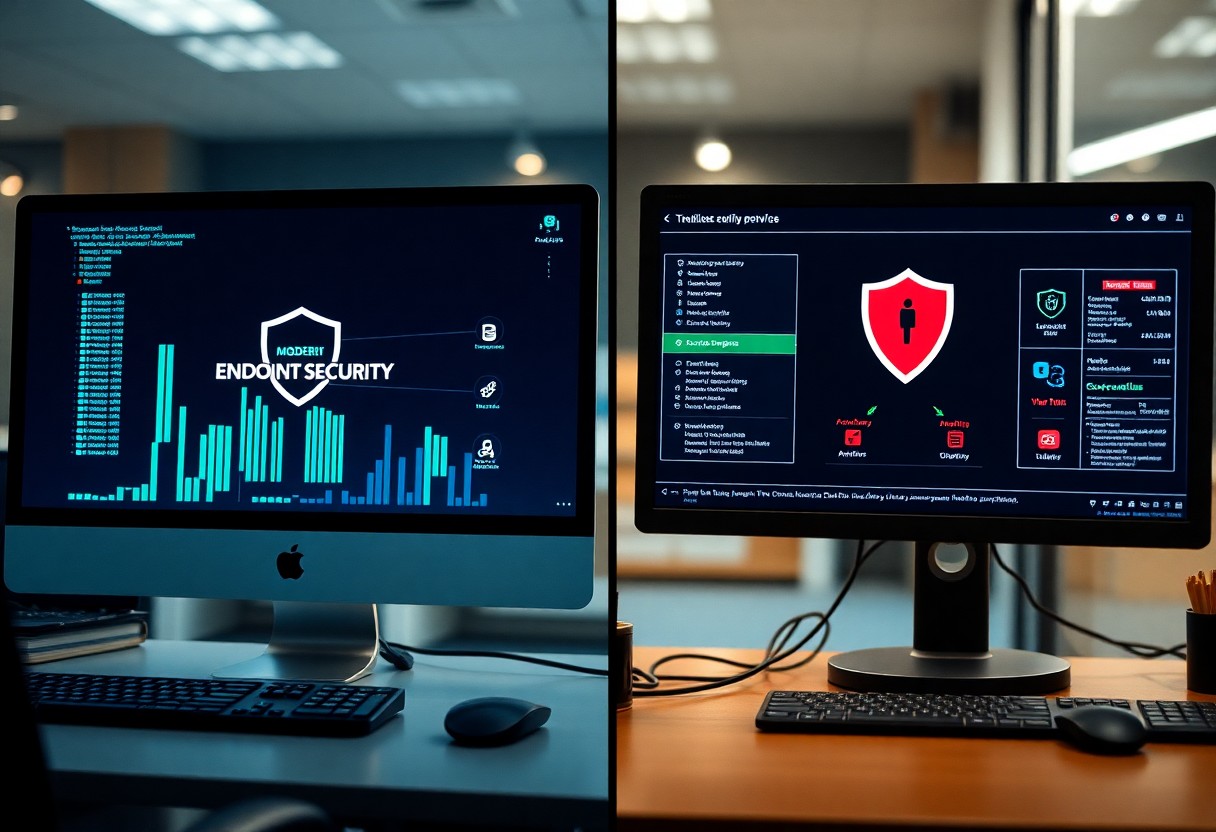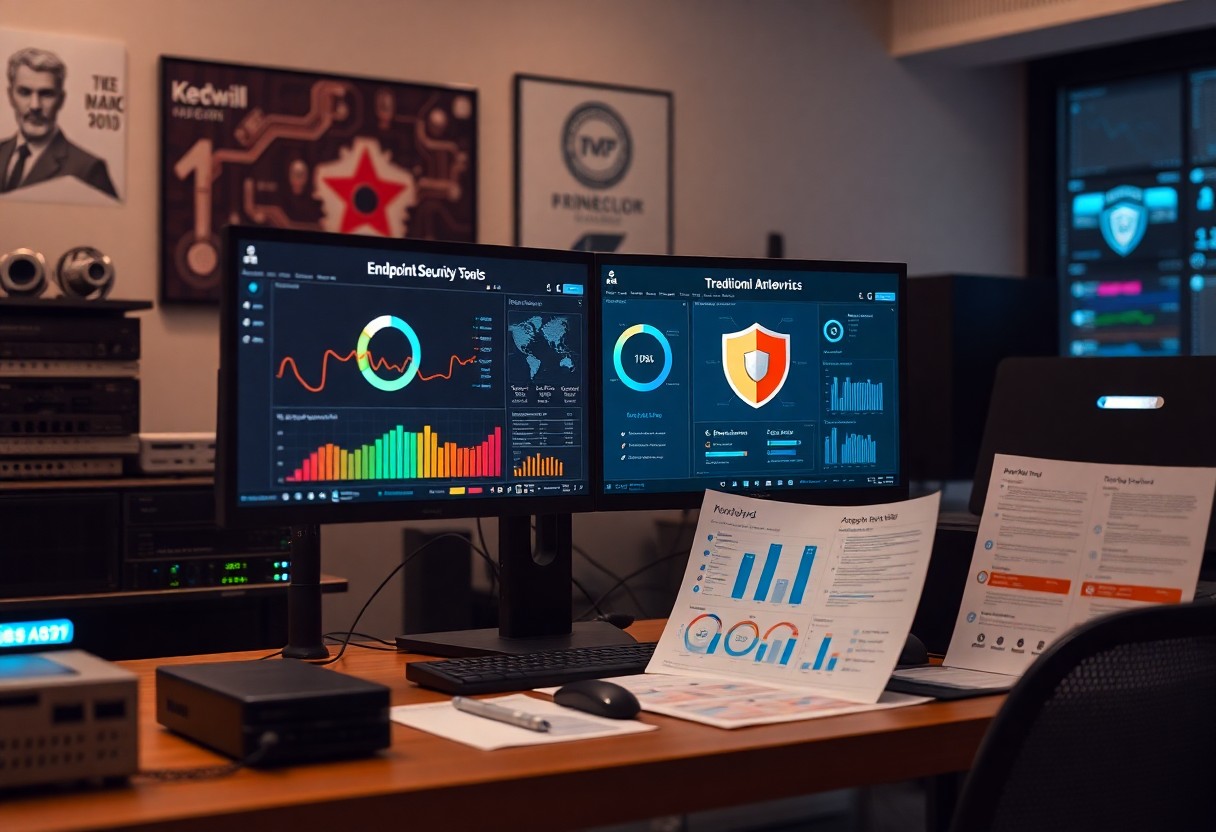What Is Endpoint Protection And Why It’s Critical For Cyber Security
You need to understand that endpoint protection is a vital component of your cyber security strategy. This technology...

Most businesses rely on security solutions to protect their digital assets, yet many overlook the differences between traditional antivirus software and more advanced endpoint security measures. In today’s landscape of increasing cyber threats, it’s imperative for you to understand how endpoint security offers enhanced protection by not just detecting but also responding to sophisticated attacks. This post will guide you through the key distinctions and help you make informed decisions for your organization’s cybersecurity strategy.


Traditional antivirus software primarily focuses on detecting and removing known malware threats based on signature files. This software scans your system for specific patterns associated with viruses, trojans, and other malicious software. By leveraging databases of recognized threats, it performs regular scans to ensure the integrity of your systems and files, providing a basic level of protection against existing threats.
Reliance on signature-based detection leaves traditional antivirus software exposed to emerging threats, especially zero-day attacks. These attacks exploit vulnerabilities before the antivirus provider updates its threat database, meaning your systems remain vulnerable until the software catches up. Additionally, traditional antivirus can generate false positives and often struggles with advanced persistent threats that use sophisticated evasion techniques.
Traditional antivirus solutions face significant limitations due to their reliance on known malware signatures. They often fail to detect emerging threats or new variants of existing malware, exposing your systems to potential breaches. Moreover, the performance impact of running constant scans can hinder your system’s efficiency, leading to a maddening experience for users. The inability to address behavioral threats or advanced evasion tactics further undermines their effectiveness, making them insufficient for comprehensive cybersecurity in today’s threat landscape.
Endpoint security refers to the strategy and technology used to protect devices that connect to your organization’s network from threats. Unlike traditional antivirus solutions that primarily focus on detecting and removing known malware, endpoint security encompasses a broader scope, addressing sophisticated threats and vulnerabilities across all endpoints—desktops, laptops, smartphones, and servers. This proactive approach not only includes antivirus capabilities but also integrates advanced features like threat intelligence, behavioral analysis, and centralized management, enabling organizations to secure their digital environments more effectively.
Comprehensive threat management in endpoint security means actively monitoring and responding to a wide array of potential threats, including malware, ransomware, and phishing attacks. By employing multiple layers of protection, you can detect and mitigate risks before they compromise your systems. This approach enables continuous vulnerability assessment and real-time response capabilities, ensuring your defenses evolve alongside emerging threats.
Key features of endpoint security go beyond simple virus detection to provide an encompassing protection suite against modern cyber threats. These features include advanced malware protection, real-time threat detection, and automated incident response. Furthermore, you gain access to tools for data encryption, user behavior analytics, and compliance monitoring. These capabilities work synergistically to reduce risks and improve your organization’s overall security posture.
Endpoint security solutions are built with numerous features designed to protect diverse types of threats effectively. Features such as device management, patch management, and secure web gateways not only strengthen defenses but also provide insights into potential vulnerabilities. This comprehensive framework allows you to remain prepared against ever-evolving threats. Assume that implementing these features will significantly enhance your security posture.
Evaluating the effectiveness of endpoint security versus traditional antivirus solutions reveals significant differences in protection levels against modern threats. While traditional antivirus relies primarily on signature-based detection, endpoint security encompasses advanced techniques such as behavior analysis, threat intelligence sharing, and automated response capabilities. For deeper insights, refer to Endpoint Security Vs Antivirus: What Is Best For You?.
| Traditional Antivirus | Signature-based detection, limited response profiles |
| Endpoint Security | Behavior analysis, real-time threat detection, automated response |
Endpoint security provides robust detection and response capabilities that traditional antivirus solutions often lack. With real-time monitoring and advanced analytics, endpoint security can identify and mitigate threats as they occur, reducing the potential damage from attacks. Automated responses enable your security team to address incidents swiftly, keeping your organization one step ahead of evolving threats.
Frequent updates and dynamic threat intelligence are pivotal in maintaining effective security measures. Endpoint security solutions regularly incorporate new threat data, allowing them to adapt to the constantly changing threat landscape. In contrast, traditional antivirus products might not update as often, missing crucial updates that protect against newer vulnerabilities.
Staying ahead in cybersecurity is heavily reliant on the frequency of updates. Endpoint security solutions leverage continuous threat intelligence feeds that are updated in real-time, ensuring you benefit from the latest vulnerability insights and attack methodologies. Traditional antivirus software typically relies on periodic updates, which may leave systems exposed during the intervals between these updates. This disparity can significantly impact your defenses against emerging threats, emphasizing the need for a proactive security strategy in your organization.
Evaluating the cost of endpoint security versus traditional antivirus involves more than just upfront expenses; it requires a deeper analysis of ongoing operational costs and potential savings. Endpoint security may demand a higher initial investment, but it often translates into long-term cost savings by preventing costly data breaches and minimizing downtime. In contrast, traditional antivirus solutions can appear cheaper, yet their limited effectiveness may lead to higher overall costs due to frequent incidents and compliance fines.
Your initial investment in endpoint security can be significant, with some solutions costing hundreds to thousands of dollars per endpoint annually. However, this upfront cost can yield substantial long-term savings by reducing the risk of breaches, potential ransomware payouts, and lost productivity associated with cyber incidents. By investing in robust security measures, your organization may save money over time, offsetting initial expenses with avoided costs related to data loss and reputation damage.
Allocating your budget effectively for security solutions requires a strategic approach that balances immediate needs with long-term goals. Start by assessing your current security posture, identifying gaps, and dedicating resources accordingly. Factor in not only the cost of software licenses but also necessary training for your team, incident response planning, and potential integrations with existing systems. Your budget should reflect the evolving threat landscape, ensuring you have adequate resources to implement a comprehensive security strategy that protects your assets.
Implementation of endpoint security requires a strategic approach that encompasses several key factors, including integration with existing systems and employee training. Assessing current IT infrastructure, evaluating compatibility with existing software, and ensuring comprehensive deployment will enhance security measures. Failure to address these elements can lead to gaps in protection and increased vulnerability within your organization.
Seamless integration of endpoint security with your existing IT systems is vital for maximizing protection. Conduct thorough compatibility assessments to identify potential conflicts with current applications and workflows. Leveraging open APIs and consulting with solution providers can facilitate a smooth transition, ensuring minimal disruption to business operations while enhancing security capabilities.
Employee training and awareness significantly impact the effectiveness of endpoint security measures. Engaging your team in regular training sessions helps foster a security-first culture, reducing the chances of human error that can compromise sensitive information. Implementing real-world scenarios and phishing simulations can enhance understanding and retention of best practices.
With employees often being the first line of defense against threats, investing in their education pays dividends. Studies show that organizations with regular security training see a 70% reduction in phishing incident rates. Continuous reinforcement through newsletters, workshops, and interactive sessions ensures your staff remains vigilant, aware of emerging threats, and equipped to respond quickly to potential breaches.

Analyzing real-world applications showcases the stark differences between endpoint security and traditional antivirus. These case studies provide insights into the efficacy and implementation of endpoint security across various industries.
For more insights on this topic, visit Antivirus vs. Endpoint Security: Choosing Business Defense.
Numerous organizations have successfully implemented endpoint security, demonstrating its effectiveness in thwarting advanced threats. For instance, a tech company saw its phishing attack success rate drop from 15% to just 2% within three months, illustrating how proactive endpoint measures dramatically improve security posture.
Several enterprises have faced significant setbacks due to reliance on traditional antivirus solutions. In many instances, these systems failed to detect sophisticated malware, leading to data breaches that cost millions in remediation. Companies consistently report that malware had already infiltrated their networks for months before traditional antivirus solutions flagged any issues.
One notable case involved a financial services firm that experienced a high-profile data breach despite relying solely on antivirus software. The breach was traced back to malware that evaded detection for over six months, leading to a loss of client trust and substantial financial repercussions. As a result, many businesses are reevaluating their security frameworks, recognizing that traditional antivirus may not provide the comprehensive protection required against emerging threats. This leads to a pressing need for adopting more robust endpoint security measures that are adaptive and resilient to today’s cyber landscape.
Now that you understand the distinctions between endpoint security and traditional antivirus solutions, you can make an informed decision for your business. While traditional antivirus offers basic protection, endpoint security provides a comprehensive approach that addresses the complexities of modern threats. By investing in endpoint security, you enhance your ability to safeguard sensitive data, manage risks effectively, and ensure compliance in an ever-evolving cyber landscape. Choose wisely to protect your assets and sustain your business continuity.
A: Endpoint security provides comprehensive protection for devices connected to a network, focusing on prevention, detection, response, and management of threats. Traditional antivirus primarily focuses on detecting and removing malware from individual devices, often lacking features for network-wide protection or responding to advanced threats.
A: Endpoint security solutions offer advanced features such as behavior analysis, threat intelligence, and incident response capabilities that detect and mitigate potential threats in real-time. They protect not just against malware, but also against sophisticated attacks like ransomware and zero-day exploits, thereby enhancing the overall cybersecurity posture of a business.
A: Traditional antivirus solutions may not provide adequate protection for modern business environments, especially with the rise of complex cyber threats. Endpoint security is recommended as it covers a wider range of attack vectors and integrates into a holistic security strategy, positioning businesses to respond effectively to evolving cybersecurity challenges.
You need to understand that endpoint protection is a vital component of your cyber security strategy. This technology...
You rely on robust cybersecurity measures to protect your business from evolving threats, and Endpoint Detection and...